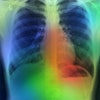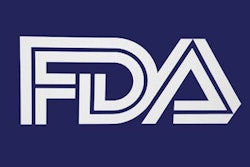
SAN FRANCISCO - The U.S. Food and Drug Administration (FDA) wants to make it easier for software developers to get regulatory clearance for their products with a new approach similar to the precertification program used for airline travelers, according to a presentation delivered at the Conference on Machine Intelligence in Medical Imaging (C-MIMI).
To this end, in 2019, the agency plans to launch a pilot software precertification program that will facilitate market clearance, said Berkman Sahiner, PhD, from the agency's Division of Imaging, Diagnostics, and Software Reliability (DIDSR) Image Analysis Laboratory. The program, called Digital Health Software Precertification, is intended to offer a more streamlined and efficient regulatory oversight pathway for software-based medical products.
What's different with the new program is that the focus will be on the software developer's demonstrated "culture of quality, operational excellence, and a commitment to monitoring real-world performance" first, rather than on the product, according to Sahiner, who spoke on Monday at C-MIMI 2018, which is sponsored by the Society for Imaging Informatics in Medicine (SIIM).
"The name evokes [the Transportation Security Administration's] Pre-Check program, and that's intended," he said. "If you've got TSA Pre-Check, you're not allowed to walk from the street into the airplane, but your security check is streamlined. In the same way, companies qualified for precertification may not be able to 'walk' into the market with their software, but their regulatory process will be smoother."
The pilot program's components will include the following:
- "Excellence appraisal" and determining precertification level. The FDA will identify criteria it will use to precertify a company and to decide whether it can keep its precertification status. A company's "excellence" will be determined by the principles of patient safety, product quality, clinical responsibility, and cybersecurity responsibility, Sahiner said.
- Determining the correct review pathway. The agency will develop a framework that a precertified company can use to determine the correct premarket review pathway for its product.
- Streamlining the premarket review process. Before a precertified company submits its premarket application, the FDA will identify the type of information needed to review software products for safety and effectiveness.
- Tracking "real-world" performance. The FDA will determine the type of information a precertified company would need to provide to demonstrate how its software product performs with patients.
The agency's latest working model of the program was released in June. The FDA will consider public comments as it continues to refine the model, Sahiner said. Currently, nine companies have been chosen to participate in the pilot.
Don't forget de novo
While the pilot software precertification program is being refined, companies developing medical software with artificial intelligence (AI) may be able to take advantage of the FDA's "de novo" petition process, Sahiner said. The FDA has three clearance levels: class I devices, most of which do not require premarket review; class II devices, which undergo a 510(k) process, for which manufacturers must establish that the new device is substantially equivalent to an already cleared device; and class III devices, which have no predicates and must undergo a premarket approval process.
But it also has a de novo process, under which companies can request that the approval process be downgraded from class III to class II, he said. In the petition, vendors must propose controls to ensure the safety and effectiveness of the device; when the FDA grants a de novo classification a new device type, a new device classification, and a new regulation are established, according to Sahiner.
"A novel device that has not been classified is considered to be class III," he said. "The de novo process is a petition for down-classification from III to II, and it must propose controls that assure the device's safety and effectiveness. Once the de novo is granted, however, the device is eligible to serve as a predicate for devices that follow in the 510(k) process."
In the past year, the FDA has granted at least four de novo petitions for imaging-related devices that have then received 510(k) clearance:
- Quantitative Insights' QuantX Advanced, a breast imaging computer-aided diagnosis platform that uses AI technology
- Imagen Technologies' AI-based OsteoDetect software for detecting and diagnosing wrist fractures in adults
- Viz.ai's Viz CTP image-processing software for viewing and analyzing CT perfusion images
- IDx's IDx-DR, which is used to detect diabetic retinopathy in adults in the primary care setting
"The FDA has cleared a number of de novo devices for image analysis that use machine learning, and this opens the path for a 510(k) process for similar technology," he said.
Ongoing research
Finally, Sahiner outlined some of the ongoing research DIDSR is doing related to machine learning for image interpretation, including projects on computational lesion insertion for algorithm training and testing, synthetic images and lesions for algorithm training, 3D convolutional neural networks for lung nodule detection, and test data reuse for continuous AI learning.
"At the FDA, we are actively working to design tools and methods related to machine learning in medical imaging to improve public health," he concluded.




















